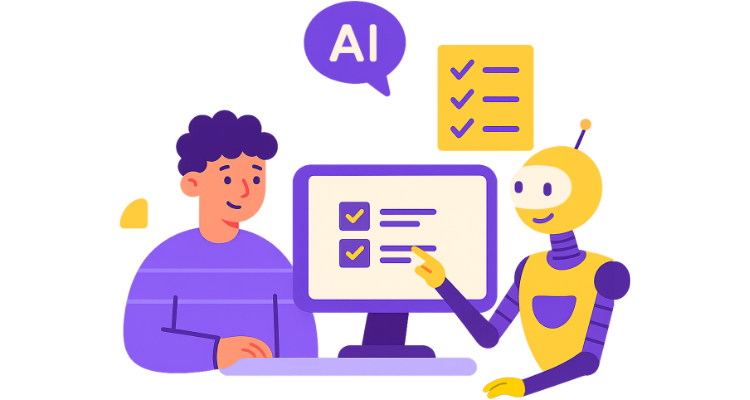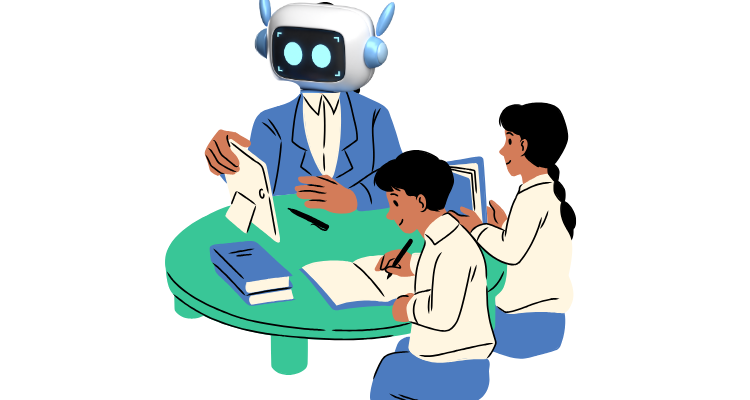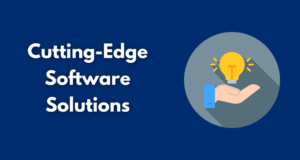Artificial intelligence is changing schools at a pace few expected. From essay scoring to lesson plans, helpful programs handle routine work and chores. Teachers gain extra minutes for people, not paperwork or repetitive tasks. The biggest change comes from the rise of the AI tutor as a guide.
It listens, explains, and adapts like a coach who knows each learner. Tools highlighted on ai-paper-writer.com show how easily helpers fit into daily study. In a short span, systems moved from labs to homes and phones. They support homework at kitchen tables and quick catch-up on buses. Falling software costs open doors for small rural districts with tight budgets.
Parents notice better marks and steadier moods during busy school weeks. Students report less stress while schools stretch money and time wisely.
This article explains how these tutors work and why tutor intelligence matters. It also reviews hard problems schools must solve before wide adoption.
Table of Contents
ToggleWhy an AI Tutor Feels Different

A typical learning app follows a fixed script and seldom bends to needs. An AI tutor behaves like a personal coach that adjusts in real time. It reads small clues such as pause length, hint clicks, and study hours. Those signals guide the next move, picked to fit the learner right now.
Researchers call this adaptive power tutor intelligence within modern tutoring programs. It blends data science, simple mind models, and proven classroom methods. A strong system can spot confusion and switch to a simpler example fast. It can also quicken the pace when repeated success suggests growing mastery.
Some tutors ask guiding questions, display a short clip, or prompt explanations aloud. By weaving these choices, the program builds a path no textbook can match.
The result feels like personal tutoring that scales across many learners at once. This mix of customization and reach sets smart tutoring apart from older tools.
How Smart Tutoring Systems Work Behind the Scenes

Each smart tutoring system relies on three core parts that steer learning. The first is the domain model, a map of facts, rules, and steps. It defines what correct work looks like for each task within a subject. The second is the learner model, which stores evidence about the current skill.
That record updates after every click, note, success, or mistake during practice. It lets the AI tutor estimate mastery live and choose helpful content. The third is the teaching model, often called the decision maker inside. It scans both models, then selects the next task, hint, or guiding question.
Machine learning helps rank options, while learning theory shapes tone and style. Many AI solutions for education also add a friendly interface that turns data into clear visuals. Progress bars, badges, and gentle alerts help students track growth each day.
Keeping layers separate allows teams to swap math or reading content quickly. That modular design speeds research and gets fresh tools into classrooms sooner.
Benefits for Students: Personal Learning in Action
Students often praise smart tutors for calm support and steady patience. A person may tire after the tenth try, but software will not judge. It will revisit a tough point as many times as the learner needs. That consistent tone grows confidence, especially for shy students in large classes.
Another gain is pace, since personal paths let students move ahead. No one waits for the whole class when mastery appears ready and stable. Quick learners stay engaged through stretch tasks, not busywork or repeated drills. Classmates who need time receive extra practice targeted to the exact gap.
Research shows steady use can lift scores by roughly a full letter grade. Real-time views help students set goals and watch growth on dashboards. Built-in supports like text-to-speech and language help widen access. Because every attempt gets recorded, the system can craft smart review plans.
Before exams, students receive focused refreshers that save hours of planning. Together, these perks turn routine homework into a clear, motivating learning journey.
Tutor Intelligence in Everyday Classrooms
In many schools, the AI tutor works beside the teacher as a partner. Tutor intelligence reveals patterns that busy educators might overlook during packed days. When a cluster struggles with fraction subtraction, the system flags the shared weakness. It also suggests a quick mini-lesson that targets the sticky skill directly.
Teachers form small groups for hands-on practice while the program assigns focused drills. This team model turns class time into a flexible workshop rather than a lecture. Live dashboards let teachers circulate with tablets and check each learner’s status.
That view supports fast feedback and timely praise at the moment of need. The same data makes the parent talk concretely, not vaguely or based on memory. The software never replaces human warmth or care within vibrant classrooms. It frees staff from repetitive grading and other low-value tasks each day. Some teachers ask the system to propose warm-up puzzles aligned to units.
Those prompts spark lively discussions and build habits for joint problem solving. Freed time can be spent mentoring, moderating debates, or designing creative projects. Used thoughtfully, tutor intelligence lifts student engagement and teacher satisfaction together.
Challenges and Ethical Questions
Excitement runs high, yet smart tutors raise serious concerns that merit care. Privacy leads the list because these tools collect rich records of performance. Schools need strong encryption, clear consent notices, and tight data practices. Bias presents another risk when models learn from narrow or skewed data.
Such systems may favor certain speech or examples, which frustrates many students. Regular audits help reduce harm, but steady oversight still remains important. Equity matters as well across regions with different devices and network access.
Some districts enjoy fast laptops and solid internet, while others lack both. Without planning, AI tutors could widen the very gaps they aim to close. There is also the risk of over-reliance on hints or instant help.
Designers add delayed feedback and reflection prompts to build grit and patience. Another worry concerns jobs, raising fears that machines might replace teachers. Studies suggest the best results appear when teachers guide and frame the work.
Practical Tips for Schools Adopting AI Tutors
Schools ready to start should pilot small before trying a district-wide change. Begin with one subject and a team of teachers who enjoy experiments. Offer strong training so staff understand dashboards and the learning ideas involved. Set clear goals next, such as lifting reading fluency by ten percent.
Other targets include faster mastery of algebra or improved attendance after school. Measurable aims keep efforts focused and help secure support for future funding. Invite families early with demo nights where the tutor walks through a lesson. That openness builds trust and increases home use during busy weeks.
Choose a platform that integrates with the learning system already in place. Fewer logins and cleaner links reduce friction and prevent password fatigue. Plan budgets for solid devices, strong Wi-Fi, and timely technical support. Nothing cools staff interest faster than repeated errors during sign-in.
Collect feedback each grading period from teachers and students alike. Use those notes to iterate, refine plans, and share what actually works. This improvement cycle turns small hiccups into insights that guide the next step.
The Future of Education Tutoring and Human Teachers
Looking ahead, experts expect smart tutors to become more conversational and natural. Advances in language tools let students type in plain speech and receive steps. Voice input may grow common as explanations flow back in friendly spoken form.
Within a decade, mixed reality overlays could guide lab work or studio projects. Many predict micro-credential paths where badges unlock as soon as mastery appears. That approach reduces reliance on single high-stakes exams at the end. Even with growth, the role of the human teacher stays central and steady. Group dynamics, curiosity, and resilience still flourish under care from people.
The AI tutor will serve as a constant helper, tracking progress quietly. It will surface resources while the teacher designs rich, creative experiences. Hybrid schedules seem likely, with basic drills handled online at home. Class time can shift toward debates, design challenges, and service learning projects.
Programs that prepare teachers now add data literacy and basic dashboard skills. Graduates learn to read trends, ask better questions, and act on insights. In short, the next wave blends machine analysis with human wisdom and empathy.
Key Points and Final Thoughts
Smart tutoring has moved from theory into daily practice across many settings. Adaptive support now reaches any device with a steady internet connection. The core advantage is tutor intelligence, which tailors help to current needs. Students gain confidence and autonomy while teachers regain time for creative work.
Schools gather clean data that guides goals, budgets, and fair improvement plans. Success still requires thoughtful planning, privacy safeguards, and regular bias checks. Strong training and family engagement also matter for long-term adoption.
When those parts align, an AI tutor becomes a trusted partner in learning. The mission stays steady even as features change with new research and tools. Deliver personal tutoring that respects pace while keeping the human touch central.
Blend empathy, evidence, and careful design to meet varied needs across communities. With that approach, every learner, regardless of zip code, can grow and thrive.









